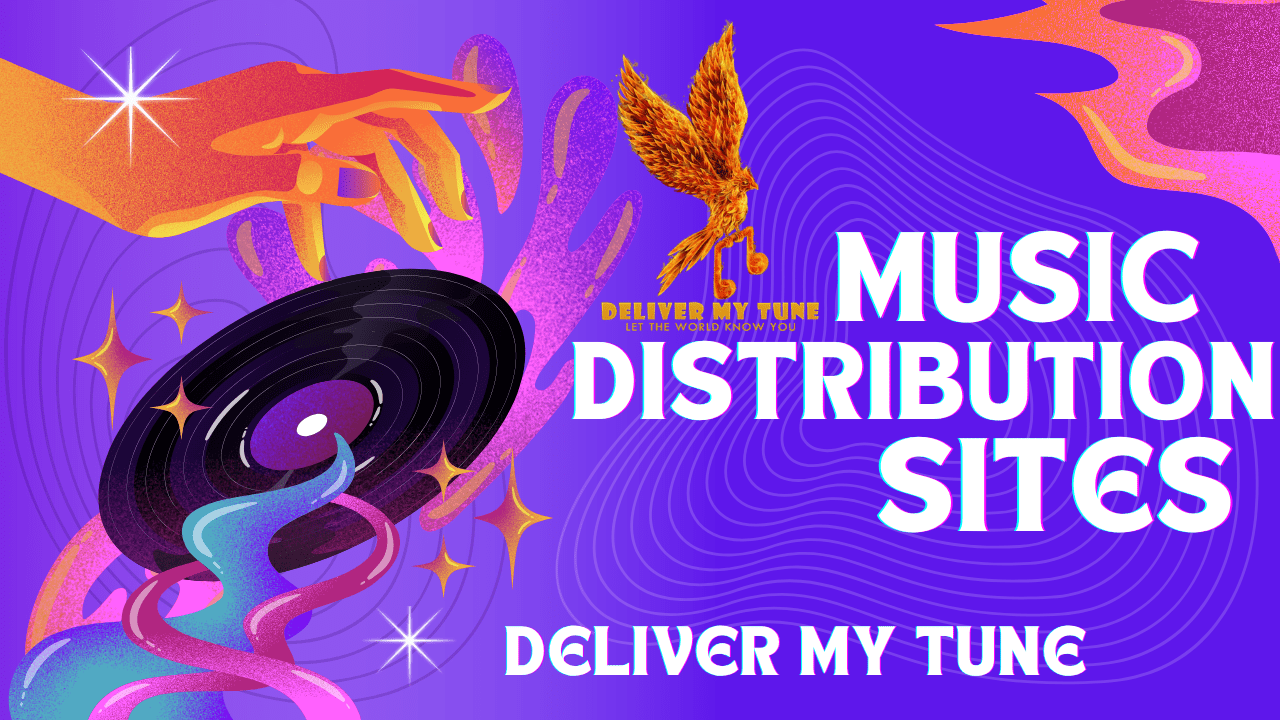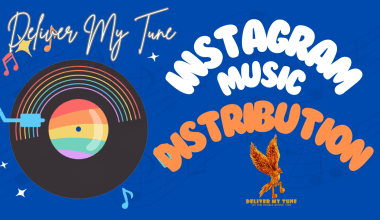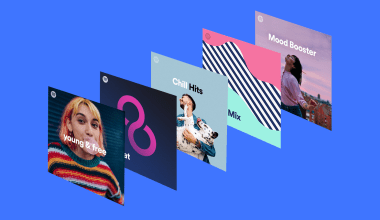The music industry has transformed drastically in the last decade, with digital platforms taking center stage. For independent artists, music distribution sites are a lifeline, offering them the opportunity to share their work with a global audience without needing a record label.
Whether you’re an aspiring musician or an established name, understanding the right distribution platform is essential for amplifying your reach, boosting your income, and building a sustainable career. This blog delves into the best music distribution sites, their features, and tips for selecting the ideal service for your needs.
What Are Music Distribution Sites?
Music distribution sites serve as intermediaries between artists and streaming platforms like Spotify, Apple Music, Amazon Music, and Tidal. These platforms simplify the process of uploading, managing, and monetizing music.
Core Functions of Music Distribution Sites:
- Uploading Music to Multiple Platforms: Artists can distribute music across dozens of platforms simultaneously.
- Revenue Collection: These services collect royalties from streams, downloads, and sync opportunities on behalf of the artist.
- Performance Analytics: Distribution sites often provide detailed insights into streaming statistics and audience demographics.
- Additional Tools: Many platforms offer services like playlist pitching, social media integration, and AI mastering.
With the right music distribution site, artists can focus on creating music while ensuring their work reaches the right ears.
The Evolution of Music Distribution
From Physical to Digital
Before the digital revolution, music distribution was a cumbersome process involving physical CDs, tapes, and vinyl. Artists relied heavily on record labels to get their music into stores. Today, digital platforms have democratized this process, allowing independent musicians to upload their work directly.
The Streaming Boom
Streaming services like Spotify and Apple Music have revolutionized how audiences consume music. In 2024, streaming accounts for over 80% of global music industry revenue. This makes music distribution platforms crucial for any artist aiming to succeed.
Why Music Distribution Sites Are Essential for Artists
1. Global Reach
Music distribution platforms make it possible for artists to reach audiences worldwide. With a single upload, your music can be available on platforms in multiple countries.
2. Monetization Opportunities
Revenue from streaming, downloads, and sync licensing is an essential income stream for musicians. Distribution services ensure these royalties are collected efficiently.
3. Data and Analytics
Understanding your audience is key to growing your career. Many platforms provide insights into listener demographics, location, and preferences.
4. Control and Independence
Independent artists retain creative control and a larger share of their earnings compared to traditional record label contracts.
Top Music Distribution Sites for Independent Artists
1. TuneCore
Known for its reliability and transparency, TuneCore has helped thousands of artists distribute music globally.
- Pros: 100% royalty retention, detailed analytics, and wide platform coverage.
- Cons: High upfront costs for releases.
2. DistroKid
DistroKid is celebrated for its affordable subscription model, which allows unlimited uploads for a flat annual fee.
- Pros: Affordable pricing, quick uploads, and seamless integration with TikTok.
- Cons: No playlist pitching tools in the basic plan.
3. Deliver My Tune
Focused on transparency, Deliver My Tune offers innovative features like AI mastering and customizable artist portfolios.
- Pros: Transparent royalty sharing, support for independent labels, and free UPC codes.
- Cons: Limited recognition compared to bigger players.
4. CD Baby
One of the oldest platforms, CD Baby is a trusted name in independent music distribution.
- Pros: Lifetime distribution for a one-time fee, physical CD services, and sync licensing options.
- Cons: Higher initial cost per release.
5. Amuse
Amuse offers a unique freemium model, making it accessible for beginners. Artists can upgrade to premium plans for faster payouts and advanced tools.
- Pros: Free basic distribution, artist-friendly interface.
- Cons: Limited features in the free plan.
6. UnitedMasters
UnitedMasters provides a blend of distribution and branding services. Their focus on connecting artists with brands sets them apart.
- Pros: Sync licensing opportunities and unique marketing tools.
- Cons: Higher revenue share for premium services.
Features to Look for in a Music Distribution PlatformSelecting the right music distribution site depends on several factors. Here’s what to consider:
1. Royalty Retention
Some platforms, like TuneCore, allow artists to keep 100% of their royalties, while others take a percentage.
2. Platform Coverage
Ensure the service distributes to all major platforms, including Spotify, Apple Music, Deezer, and regional streaming services.
3. Pricing Model
Compare subscription-based models (e.g., DistroKid) versus pay-per-release models (e.g., CD Baby).
4. Additional Services
Features like playlist pitching, royalty advances, and social media integration can add significant value.
5. Customer Support
Reliable support is crucial, especially for resolving issues with payouts or metadata.
Success Stories from Music Distribution Sites
1. Lil Nas X and Amuse
Lil Nas X used Amuse to distribute his hit single Old Town Road. The platform’s free distribution service helped him gain global recognition.
2. Chance the Rapper and TuneCore
Chance the Rapper famously used TuneCore to release his mixtape Coloring Book. This led to multiple Grammy nominations without a traditional label.
Common Challenges with Music Distribution
Despite their many advantages, artists may face challenges with music distribution sites:
1. Metadata Errors
Incorrect song titles, artist names, or album artwork can delay releases. Always double-check your metadata before submission.
2. Royalties and Payment Delays
Some platforms take longer to process royalty payments. Choose platforms known for timely payouts.
3. Marketing Limitations
While distribution sites handle the technicalities, artists must actively promote their music to maximize streams.
How to Maximize Your Success
1. Optimize Your Metadata
Ensure your song titles, artist name, and descriptions are accurate and SEO-friendly.
Platforms like Instagram and TikTok can drive traffic to your streaming profiles. Pair social media campaigns with playlist pitching for the best results.
3. Engage Your Audience
Connect with listeners through live streams, behind-the-scenes content, and interactive campaigns.
4. Use Analytics
Track your performance on platforms like Spotify for Artists and adjust your strategy accordingly.
5. Plan Your Releases
Strategic timing can make or break a release. Consider peak listening times and promotional opportunities.
Advanced Tools Offered by Distribution Platforms
1. AI Mastering
Platforms like Deliver My Tune provide AI-driven mastering to ensure professional sound quality.
2. Playlist Pitching
Getting featured on playlists can significantly boost streams. Services like CD Baby and Amuse offer playlist pitching options.
3. Pre-Save Campaigns
Spotify’s Countdown Pages allow artists to collect pre-saves, creating buzz before a release.
Services like Deliver My Tune link distribution with social media platforms, keeping profiles updated automatically.
The Future of Music Distribution
The future of music distribution sites lies in further integration with technology and audience insights. AI-driven recommendations, personalized listener targeting, and blockchain-based royalty systems are just a few innovations on the horizon.
Conclusion
Choosing the right music distribution platform is one of the most critical decisions an independent artist can make. Platforms like Deliver My Tune, TuneCore, and DistroKid offer distinct advantages tailored to different needs.
By understanding how these platforms work and leveraging their features, you can ensure your music reaches a global audience. Remember, distribution is only part of the journey. Pair it with consistent marketing and engagement to truly thrive.
Related Articles:
For further reading, explore these related articles:
- A Guide to “Your Roster” on Spotify for Artists
- Top 5 Platforms for Music Sampling
- How to Make Zoom Calls To Engage With Your Fans!
For additional resources on music marketing and distribution, visit Deliver My Tune.






